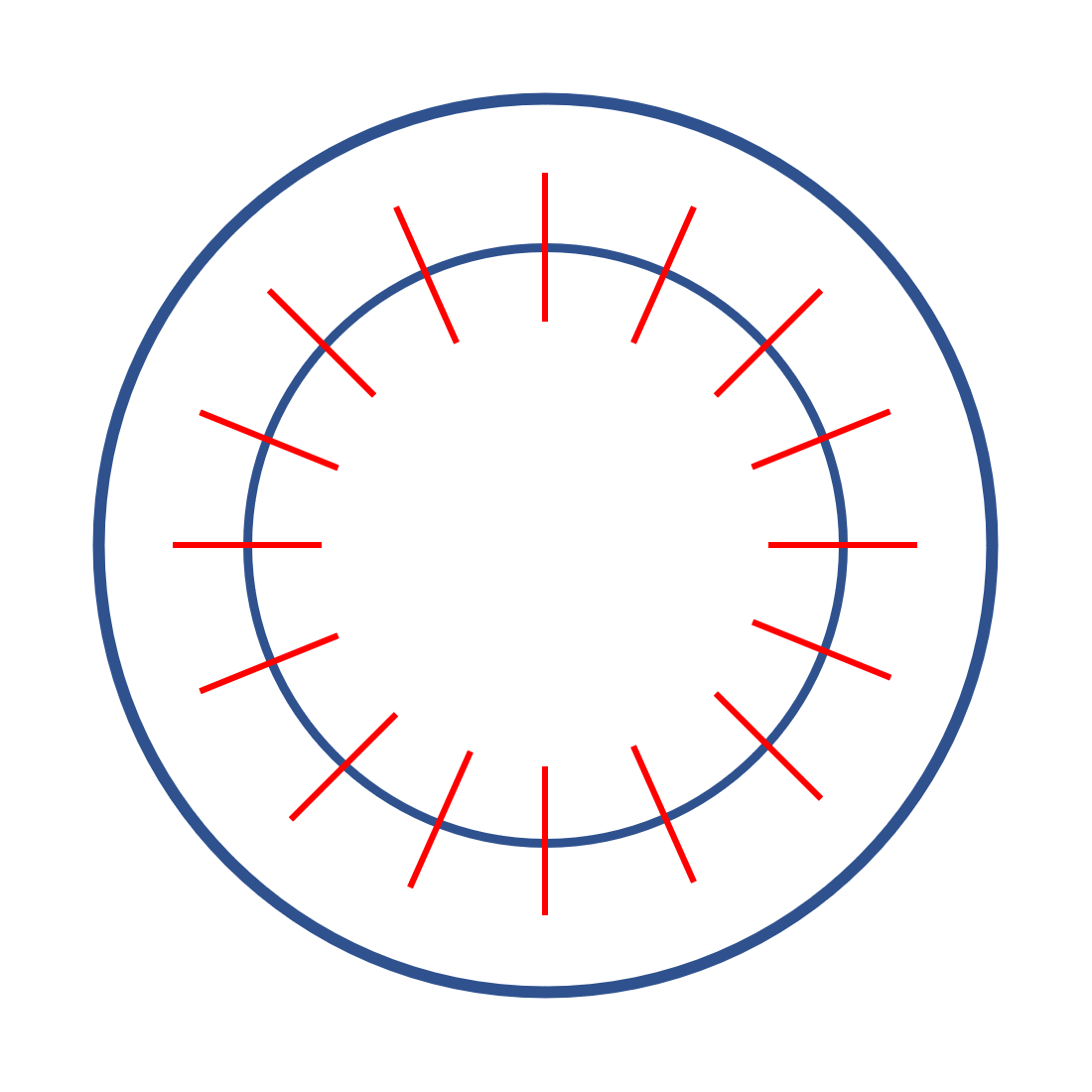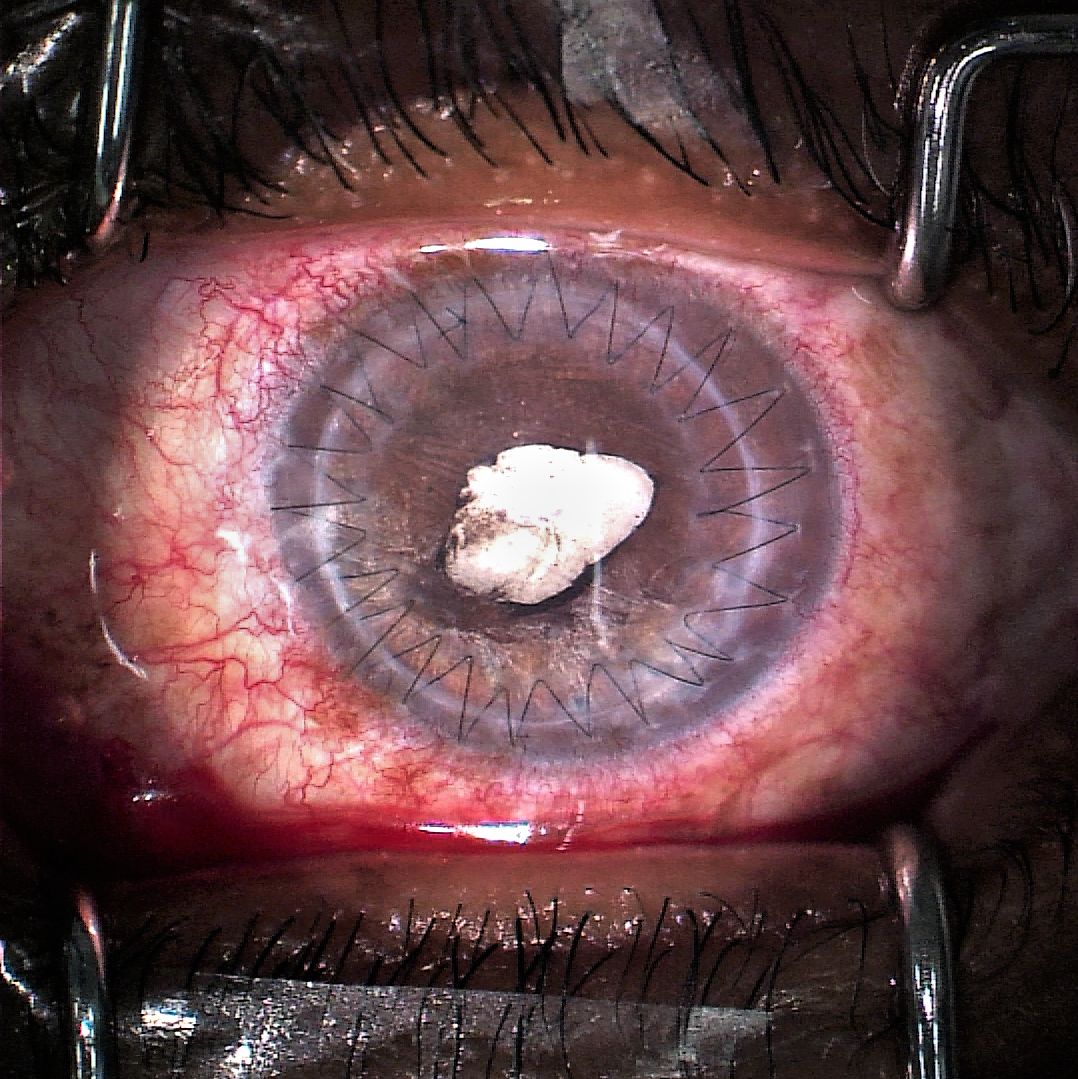
Corneal Transplant Surgery
Penetrating Keratoplasty
What is a Penetrating Keratoplasty?
A penetrating keratoplasty is a full-thickness corneal transplant. This surgery involves replacing the central portion of a diseased cornea, and using sutures to sew a donor cornea in place.
What are the steps involved in a penetrating keratoplasty?
In penetrating keratoplasty surgery, there is some variation to the techniques. Broadly, a trephine (a special surgical circular blade) is used to cut out a circular portion of the patient’s central cornea.
A donor cornea of the same size is cut into a circle of the same dimensions, and is carefully aligned with the patient’s cornea. The donor cornea is then secured in place with sutures. There are some variations in technique, in how the sutures are placed attaching the donor cornea to the patient’s eye. In general, the sutures must ensure a secure, and stable fit of the donor cornea and the patient’s eye.
Placing the sutures in a corneal transplant is a very delicate, skill-dependent task. Ideally, the sutures have equal tension along the graft, evenly distributing the tension attaching the donor cornea to the host. Unequal tension amongst the sutures will result in astigmatism, and irregular astigmatism cannot be corrected with glasses or soft contact lenses. The two main techniques involve either an interrupted suture technique, or a running suture technique.
Interrupted Suture Technique
The standard technique for a penetrating keratoplasty involves placing 16 separate, “interrupted” sutures, 360° around the perimeter of the corneal graft. These sutures anchor the graft to the host. The tension of these individual sutures must be meticulously adjusted so they are fairly even. Afterwards, patients often need to wear a hard contact lens in order to see well.
Running Suture Technique
The running suture penetrating keratoplasty is a more advanced technique, demanding a higher level of skill on the surgeon’s part. Usually, 24 passes of the suture thread are made in a crisscross fashion, and they must be very evenly spaced. Since a single thread is used, tension is better distributed along the anchor points between the corneal graft and host. This results in less irregular astigmatism, and patients often experience a higher quality of vision.
Both techniques effectively replace the central portion of the patients cornea, and restore vision. Our doctors generally performs a running suture technique, even though it is more a more challenging and demanding of surgical skill, because it usually leads to better patient outcomes.
Source:
Intraoperative versus postoperative suture adjustment after penetrating keratoplasty Cornea 1998 Nov;17(6):590-4 https://pubmed.ncbi.nlm.nih.gov/9820936/
Comparison of suture-in and suture-out postkeratoplasty astigmatism with single running suture or combined running and interrupted sutures Am J Ophthalmol 1996 Nov;122(5):696-700. https://pubmed.ncbi.nlm.nih.gov/8909210/
Corneal topography-guided penetrating keratoplasty and suture adjustment: new approach for astigmatism control Cornea 2007 Jul;26(6):675-82. https://pubmed.ncbi.nlm.nih.gov/17592315/
Refractive outcome of single running suture adjustment in penetrating keratoplasty Eur J Ophthalmol. Mar-Apr 2004;14(2):94-9. doi: 10.1177/112067210401400202.
Can corneal sutures break?
The 10-0 nylon sutures used in corneal transplant surgery are not meant to dissolve. However, like all sutures, after a time, the sutures may snap and break. When this happens, a patient will often feel a sudden foreign body sensation in their eye, like there is an eyelash stuck in their eye. A broken corneal suture warrants an urgent visit to your ophthalmologist, as a loose suture thread can represent a risk for infection. The loose suture thread creates a channel for bacteria to creep along from the outside of the eye, to the inside of the eye and potentially cause a devastating eye infection. If you feel that you may have a broken corneal suture, please contact your ophthalmologist.
What does a Penetrating Keratoplasty Look Like?
For many patients, surgeon technique and skill will affect the long-term vision and regularity of the surface of the eye.
After a Penetrating Keratoplasty, patients may experience a dramatic improvement in quality of vision, both with glasses, or contact lenses.
Corneal Topography is a tool used to measure the surface regularity of a cornea. The more “regular” and even the surface of a cornea, the better a patient’s quality of vision will be. This is a patient after Penetrating Keratoplasty surgery.

Take charge of your vision. Schedule a Consultation today


